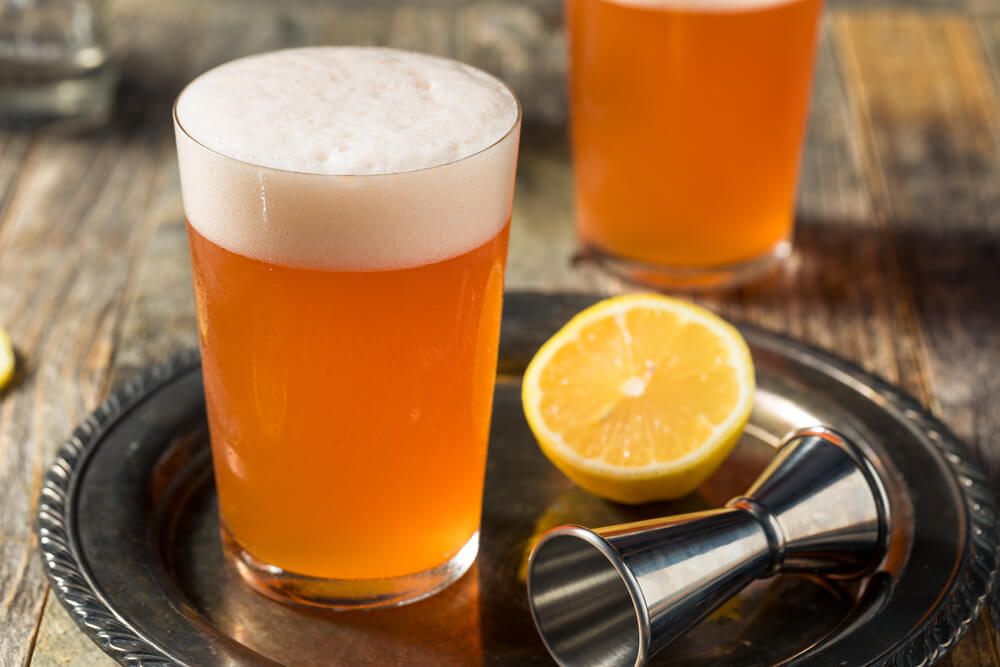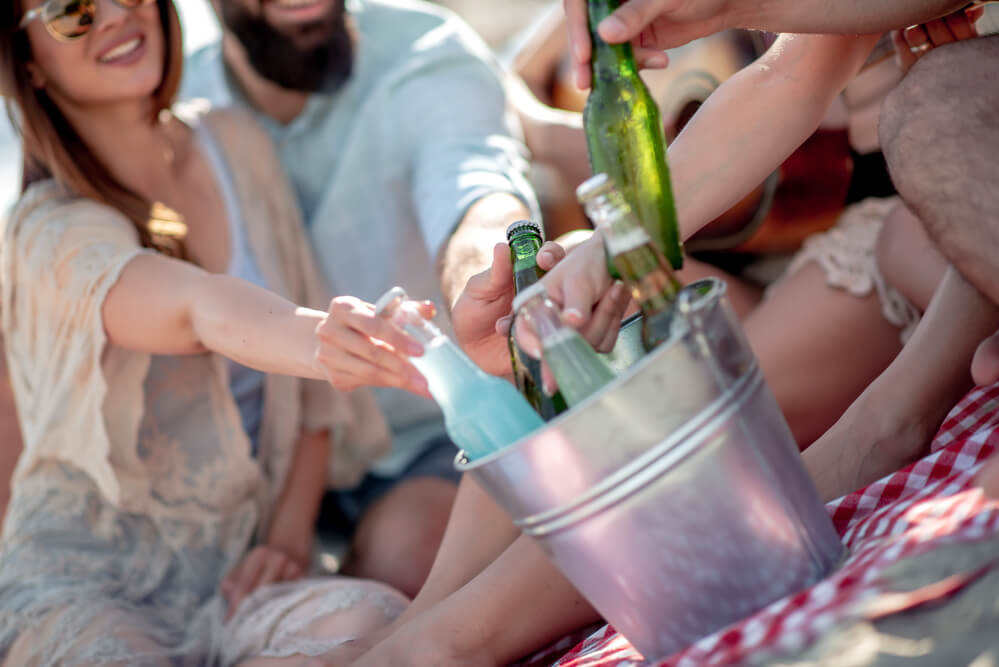Shandy vs Non-alcoholic beer has a bad reputation. I enjoy heavy and high ABV (alcohol by volume) beers as much as my fellow brewers, but lighter beer options have their place too.
Who doesn’t love a refreshing shandy with a summer brunch? Or a non-alcoholic beer when you’re the DD (designated driver)? Let me compare them for you below so you can decide if they’re right for you and which you should try next.
Table of Contents
What is a Shandy?
A shandy is a beer cocktail made by mixing beer with lemonade or lemon-lime soda. This is where people usually confuse it with a Radler, which is also a beer cocktail. Radlers are made with any fruit juice (most often grapefruit) other than lemonade.
Simply create a 50/50 mix of juice to beer, and you have a shandy. For the beer half, you can get creative. Pilsners, wheat beers, light IPAs, you name it. You can use any beer you like, other than dark beers. I mean, you can use a dark beer if you want to, but that sounds gross.
Shandies are also available as a pre-mixed drink for convenience. They come in cans and bottles like traditional beer and usually from the same places.
What is Non-alcoholic Beer?

Non-alcoholic beer is almost what it sounds like; beer without alcohol. But that’s not entirely true.
Like decaf coffee (which still has some caffeine), non-alcoholic beer still has some alcohol. The range in ABV is anywhere from 0.05% to 1.2%. There’s an article in The Times of India that details the subcategories of non-alcoholic beer. Non-alcoholic beer is an art of its own.
For this article, non-alcoholic beer is the same as regular beer but with only a tiny amount of alcohol.
What are the Differences Between a Shandy and a Non-alcoholic Beer?
Even though they’re both similar in their lower ABV levels, shandies still have a higher ABV than non-alcoholic beer. Non-alcoholic beer has a maximum ABV of 1.2%, while (commercial) shandies are usually somewhere between 4% – 4.5%.
Another difference is flavor.
Non-alcoholic beer can taste like regular beer. It just doesn’t have the alcohol. So the flavor is all over the place but still in line with traditional beer. Shandies are flavored with lemonade or lemon-lime soda, so they’re citrusy. The flavor can change based on which beer you choose to mix with the lemonade. If you pick something that compliments citrus, the taste will be similar.
Also, non-alcoholic beer is lighter in alcohol but not calories. Shandies, however, can become low-calorie options by using low-calorie or light beer as the mix.
What’s Better About a Shandy?

Shandies are customizable, meaning you can have lots of fun experimenting with them. They’re light and can be the healthier option, minimizing the calorie count by mixing the lemonade with low-calorie beer.
They also taste more like a breakfast drink, complimenting breakfast or brunch in a way that other traditional beers may not. Shandies are the mimosas of the beer world.
What’s Better About a Non-alcoholic Beer?
Non-alcoholic beer is better for any situation where ABV is a problem. It still offers the flavor of traditional beer because the brewing process is very similar. Flavour typically isn’t sacrificed while making it non-alcoholic.
Who Should Pick a Shandy and Why?
A shandy is a solid pick for anyone trying to lower their calorie intake. It’s also a good option for anyone into mixology and cocktails.
A shandy is also an excellent addition to any event or meal earlier in the day. Think breakfast or brunch with friends and family. They are also very refreshing on a hot summer day.
Who Should Pick a Non-alcoholic Beer and Why?
Non-alcoholic beer can include non-drinkers in the fun at a tasting event or dinner. It’s a good choice for anyone who likes the taste of traditional beer but can’t have alcohol. This may be for medical reasons or to help someone who is choosing to abstain.
This also makes it a good choice for the DD in any group.



